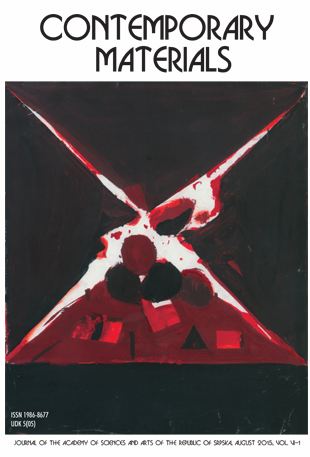A REVIEW OF RECENT DEVELOPMENT OF THE SOLVENT-DEFICIENT METHOD
DOI:
https://doi.org/10.7251/COMEN2202151ZAbstract
The challenges of modern society and the requirements for high-tech materials have led to a new stage in the development of chemical synthesis methods. This stage is demanding a reliable, controllable, and green approach to the production of necessary materials. One of the recently developed approaches for metal oxide nanoparticles synthesis is the solvent deficient method. A cutting edge of this synthetic method is a synthesis with increased control throughout chemical transformation resulting in optimal conditions for materials production. As a result, oxide nanoparticles are produced fast, environmentally friendly, cost-effective, and with low energy consumption. On the other hand, a complex reaction mechanism is presenting a challenge for reliable kinetic studies. The present review follows the recent trends in the development of the solvent deficient method concerning the binary, ternary, and complex metal oxides. Special attention is given to considering approaches responsible for desirable mechanisms of catalytic applications. In future development, the reported synthesis method is expected to be employed in a high entropy oxides formation. Due to simple preparation steps, it will be possible to automatize the reaction procedure and investigate a large number of possible compositions which is imperative for new complex materials. Finally, precursors heating could be transformed from conventional to microwave. Solvent-deficient method deals with precursors sensitive to microwave irradiation which could ensure rapid heating and transformation to desirable oxide nanomaterials.
